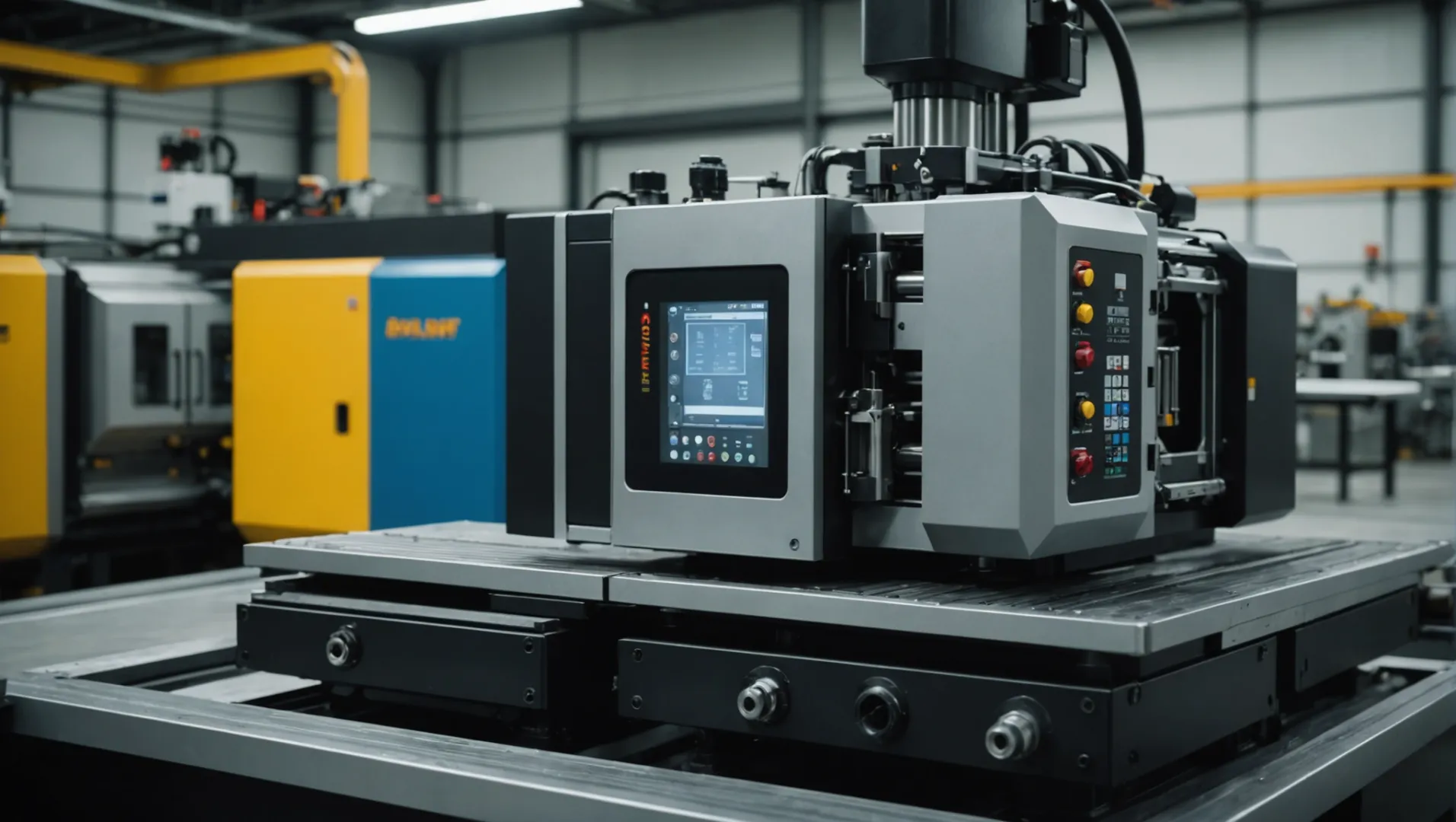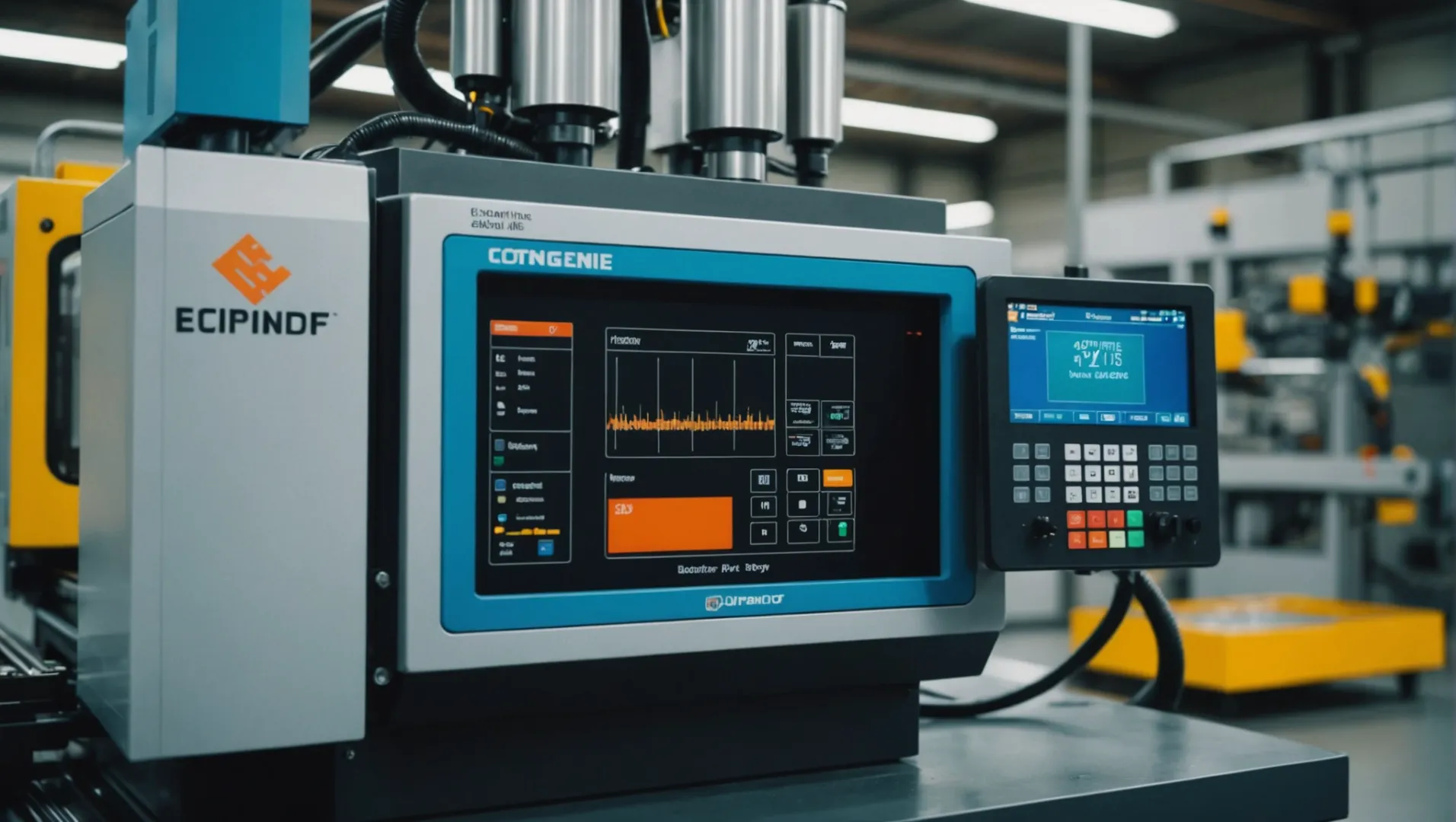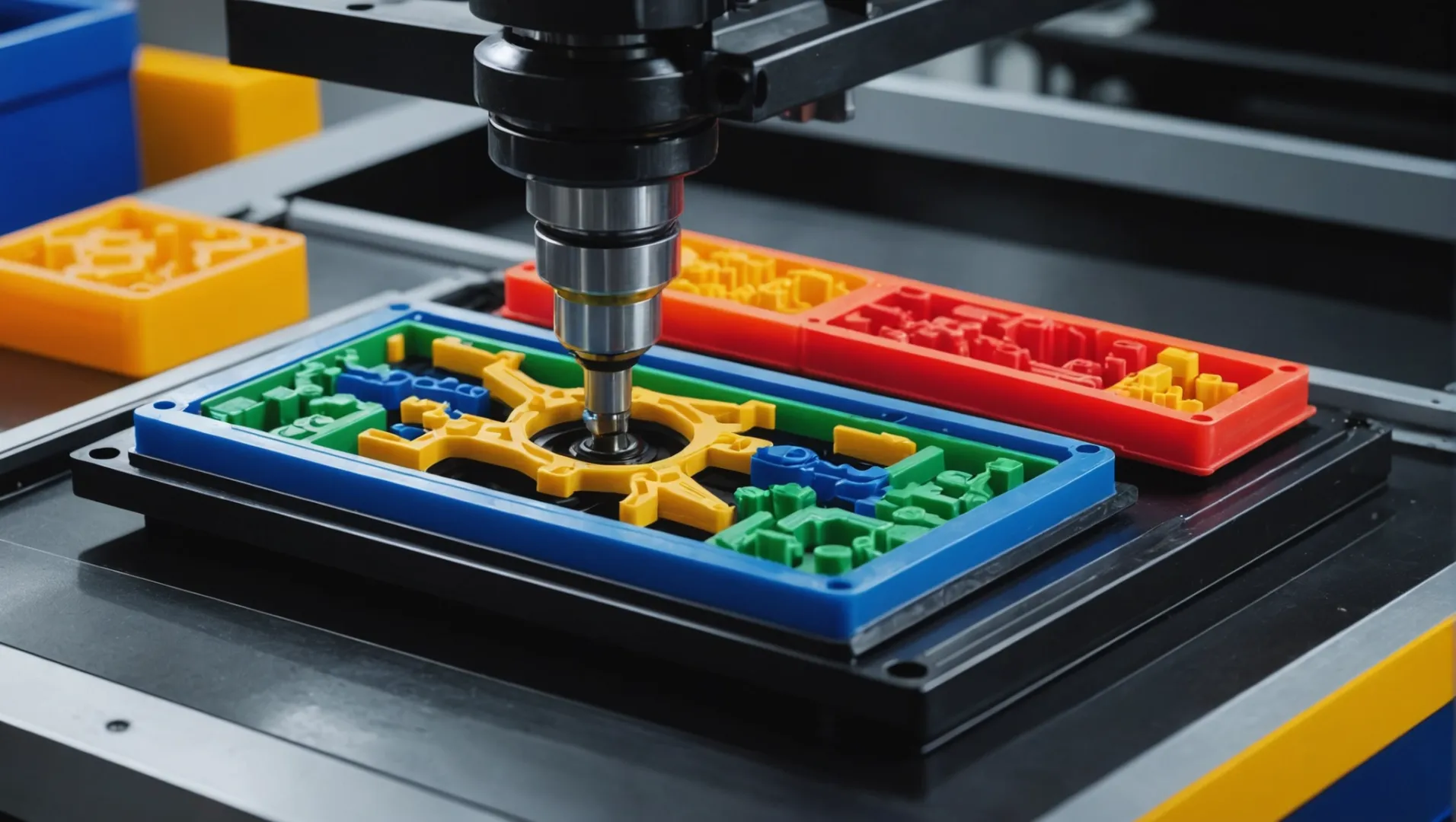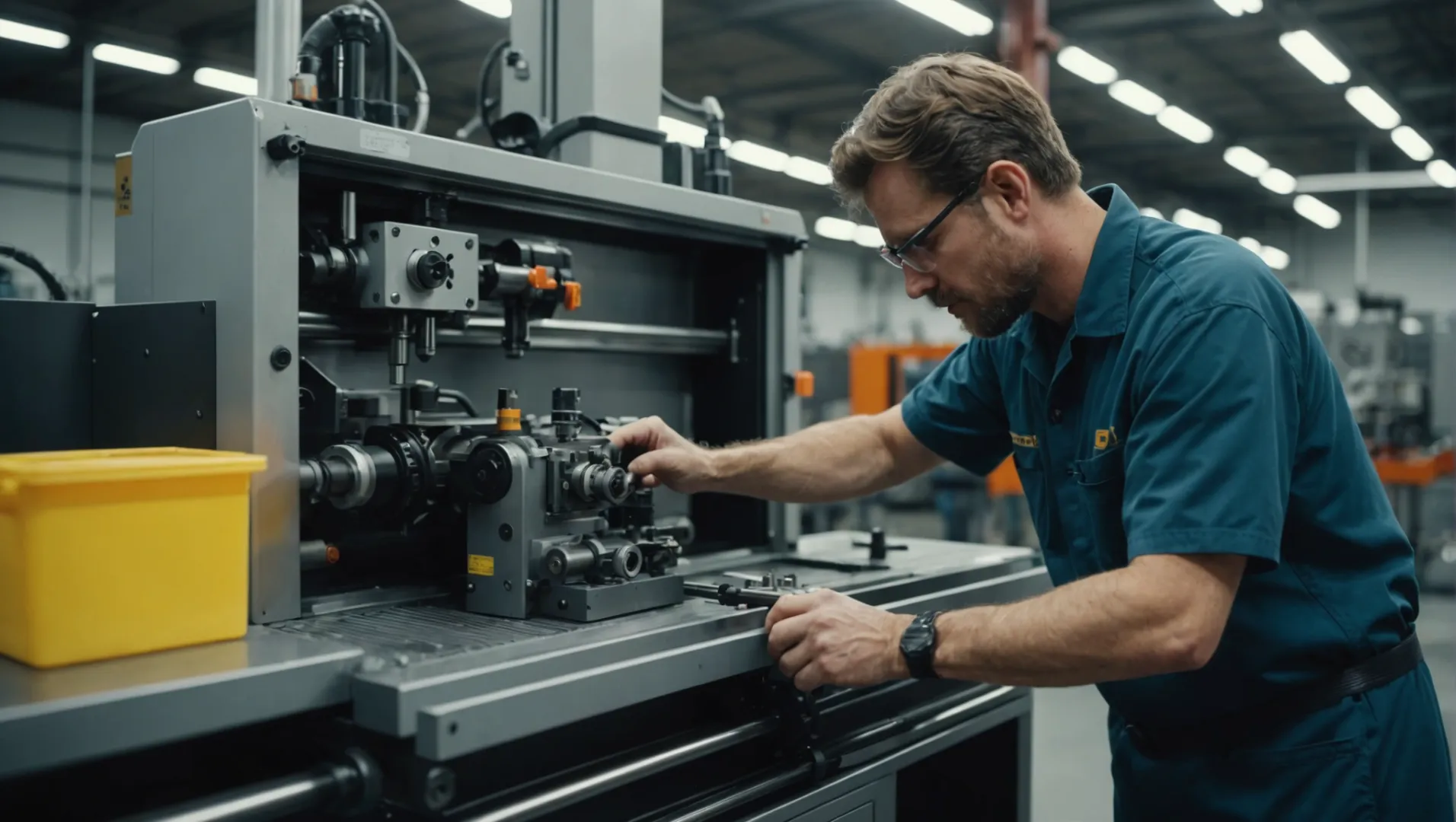
Color mixing in multi-color injection molding can be a nightmare for manufacturers. Let’s explore how to keep those colors distinct and vibrant!
To prevent color mixing in multi-color injection molding, focus on independent runner systems, precision parting surfaces, accurate parameter settings, sequential injection control, suitable material selection, and diligent equipment maintenance.
Understanding these strategies deeply can significantly enhance your process efficiency and product quality. Let’s delve into the critical areas that matter most.
Independent runner systems prevent color mixing in molds.True
Independent runners separate colors until they reach mold cavities.
What Role Does Mold Design Play in Preventing Color Mixing?
The design of the mold is crucial in multi-color injection molding, as it directly influences the prevention of color mixing.
Mold design is pivotal in preventing color mixing by utilizing independent runner systems and precision parting surfaces to control the flow and separation of different colored plastics.

Independent Runner Systems: The First Line of Defense
In the realm of multi-color injection molding, one of the primary strategies to prevent color mixing is the design of independent runner systems1. Each color of plastic should have its dedicated runner, ensuring that the materials remain separated until they reach their designated mold cavities.
The runner’s size and shape are tailored to each plastic’s fluidity, reducing retention and backflow. This level of customization not only prevents mixing but also ensures that the injection process is efficient and precise.
Example Table: Runner System Optimization
| Plastic Type | Runner Size | Shape Consideration |
|---|---|---|
| Color A | 2mm | Circular |
| Color B | 3mm | Rectangular |
Precision Parting Surface Design: Ensuring Tight Seals
The parting surface in a mold acts as the critical interface where two mold halves meet. To prevent color intermixing, these surfaces must be designed with high precision. A perfectly sealed parting surface stops different colors from leaking and blending at these interfaces.
Employing advanced manufacturing techniques like EDM (Electrical Discharge Machining) or wire cutting ensures that these surfaces are exceptionally flat and accurate. Such technologies enhance the mold’s ability to maintain its integrity even under high pressure, thus keeping colors distinct and separate.
The Interplay of Mold Design with Process Control
While mold design lays the foundation for preventing color mixing, it must work in harmony with accurate process control measures. By aligning these aspects, manufacturers can ensure not only the separation of colors but also enhance the overall quality and efficiency of the production process.
In summary, a well-thought-out mold design, characterized by independent runner systems and precision-engineered parting surfaces, plays a pivotal role in maintaining color integrity in multi-color injection molding. These elements must be meticulously planned and executed to achieve optimal results.
Independent runner systems prevent color mixing.True
They ensure each color remains separated until reaching the mold cavity.
Precision parting surfaces are unnecessary for color separation.False
They prevent leakage and blending of colors at mold interfaces.
How Does Process Control Impact Color Consistency in Injection Molding?
Maintaining color consistency in injection molding is essential for product quality and brand reputation. How does process control play a role?
Process control in injection molding ensures color consistency by managing parameters like temperature, pressure, and timing to prevent color variations.

The Importance of Accurate Parameter Settings
In injection molding, managing parameters such as temperature, pressure, and speed is crucial for maintaining color consistency. Different plastics have unique physical properties2 that require tailored settings. Accurate parameter settings ensure that each color flows correctly, reducing the risk of color intermixing or unintended shade variations.
-
Injection Molding Temperature: Too high or too low temperatures can affect the plastic’s viscosity, causing it to flow unevenly and result in color inconsistencies.
-
Injection Molding Pressure: Adequate pressure ensures uniform distribution of material within the mold, preventing areas of differing color concentration.
Sequential Injection Molding Control
Sequential injection molding is vital for controlling the order and timing of injecting different colors. This method involves injecting one color at a time and requires precise control over the sequence and switching times to avoid overlap or unintended mixing.
- Advanced Control Systems: Using advanced control systems like electric or hydraulic servo machines allows for precise timing and sequence control, ensuring that each color aligns perfectly within the mold as designed.
Monitoring and Adjustments
Ongoing monitoring of the injection process helps detect and correct any deviations that could lead to color inconsistency. Technologies like real-time monitoring systems can alert operators to changes in the process environment or material behavior, prompting necessary adjustments.
-
Real-Time Monitoring: Systems that provide feedback on key parameters can help maintain optimal settings throughout the production cycle.
-
Feedback Loops: Establishing feedback loops allows for continuous improvement in process control, adapting to minor changes in material batches or environmental conditions.
Implementing effective process control in injection molding not only ensures color consistency but also enhances overall production efficiency and reduces waste due to defects. By focusing on these control aspects, manufacturers can achieve high-quality outcomes consistently.
Accurate temperature settings prevent color inconsistencies.True
Temperature affects plastic viscosity, influencing color flow and consistency.
Sequential injection molding increases color variation risk.False
It reduces risk by controlling the order and timing of color injection.
Why Is Material Selection Critical in Multi-Color Injection Molding?
Selecting the right materials in multi-color injection molding is vital to ensure vibrant, accurate color separation and product integrity.
Material selection is crucial in multi-color injection molding to ensure compatibility, color stability, and prevent unwanted mixing, enhancing product quality and consistency.

Compatibility and Stability
In multi-color injection molding, selecting materials with compatible chemical properties is essential. Incompatibility can lead to phase separation or chemical reactions that result in color mixing. Materials should also possess high color stability to maintain the vibrancy and distinction between different hues. Plastic suppliers can provide detailed insights into the compatibility and stability of potential materials.
Considerations for Material Properties
Different colors may require distinct material properties. For instance, the fluidity and melting temperature of plastics can affect how well they integrate during the molding process. Selecting materials that align with these specific requirements ensures a smoother production cycle.
Additionally, properties like UV resistance and thermal stability can influence long-term color retention and appearance.
| Property | Impact on Molding |
|---|---|
| Fluidity | Affects fill time and uniformity of color layers |
| Melting Point | Determines processing temperature range |
| UV Resistance | Enhances durability against sunlight exposure |
| Thermal Stability | Prevents deformation at high temperatures |
Importance of Pre-Processing
Drying and pre-treating materials before molding is another critical step. Moisture or impurities can lead to defects, impacting color clarity and separation. Specific pre-treatment techniques, such as preheating or additive mixing, may be necessary to optimize material performance.
For example, consulting with a supplier3 for tailored advice on pre-processing can prevent issues that might arise from improper material handling.
Advanced Material Technologies
Recent advancements in polymer technology offer innovative solutions for multi-color applications. Co-polymer blends or specialty additives can enhance compatibility between different colors, reducing the risk of bleed or blending. Exploring these technologies can lead to superior results in both aesthetic appeal and functional performance.
Incorporating advanced material technologies4 can significantly refine the precision of your multi-color injection molding processes.
Summary
The meticulous selection of materials not only aids in preventing color mixing but also enhances the overall quality of the molded product. By considering compatibility, stability, and innovative technologies, manufacturers can achieve a seamless integration of multiple colors without compromise.
Material compatibility prevents color mixing in molding.True
Compatible materials avoid chemical reactions that cause color mixing.
UV resistance is irrelevant in multi-color molding.False
UV resistance is crucial for maintaining long-term color retention.
What Are Best Practices for Equipment Maintenance to Avoid Color Mixing?
In multi-color injection molding, meticulous equipment maintenance is crucial for preventing color mixing and ensuring high-quality outputs.
Regular maintenance and cleaning of injection molding machines and molds are essential to avoid color mixing, ensuring equipment functions optimally and consistently.

Regular Injection Molding Machine Maintenance
Maintaining injection molding machines is key to avoiding color mixing. Regular inspections and cleaning can prevent failures that might cause colors to bleed together. Focus on cleaning critical components such as the barrel, screw, and nozzle to remove residual material that could lead to contamination.
It’s vital to check the hydraulic system’s5 integrity, ensuring no leaks or malfunctions that might alter the injection process. Additionally, the electrical and mechanical systems should be examined regularly to ensure they are functioning correctly, as any discrepancies could impact the injection sequence or pressure control, leading to unintended mixing.
Replacing worn parts proactively can also prevent unexpected breakdowns that might disrupt the meticulous process of multi-color injection.
Mold Cleaning and Maintenance
Equally important is the maintenance of molds. After each use, thorough cleaning is necessary to remove any leftover plastic or impurities that might affect subsequent runs. This practice not only prevents color mixing but also extends the mold’s lifespan.
Regular application of rust inhibitors can protect molds from corrosion, ensuring they remain in optimal condition. Checking for precision and sealing effectiveness is also vital. Any misalignment or gaps in sealing can allow colors to mix where they shouldn’t.
Establishing a Maintenance Schedule
Implementing a structured maintenance schedule helps ensure consistent machine performance. This schedule should be tailored to each specific piece of equipment, considering its usage frequency and workload.
| Maintenance Activity | Frequency | Key Components |
|---|---|---|
| Machine Cleaning | After every shift | Barrel, screw |
| System Check | Weekly | Hydraulics, electrics |
| Part Replacement | As needed | Worn parts |
| Mold Cleaning & Inspection | After each run | Sealing, precision |
| Rust Prevention | Monthly | Entire mold |
By adhering to these best practices, manufacturers can significantly reduce the risk of color mixing in multi-color injection molding processes. This not only maintains the quality of products but also optimizes production efficiency.
Regular cleaning prevents color mixing in molds.True
Cleaning removes residual materials that could cause contamination.
Hydraulic system checks are unnecessary for color mixing.False
Hydraulic issues can alter injection processes, causing color bleed.
Conclusion
Preventing color mixing requires precision across all stages. Reflect on your practices and explore improvements to elevate your manufacturing standards.
-
Learn how independent runners help prevent color mixing in molds.: Two-color injection molding is a process that allows two different colors of plastic to be used in a single molded part. ↩
-
Understand how physical properties affect molding parameters for optimal results.: These properties include heat and impact resistance, along with tensile strength and how well it withstands molding pressure. These properties … ↩
-
Consulting suppliers helps tailor material choices to specific project needs.: Learn how to select the right material for your injection molding design with this technical overview of thermoplastic resins. ↩
-
Exploring new technologies enhances precision and quality in molding processes.: Overmolding is an innovative process that molds resin over an injected molded plastic. The process typically uses a rubber-like substance, such … ↩
-
Understand why regular hydraulic checks are crucial for consistent machine performance.: In addition to improper maintenance, contaminated hydraulic oil is one of the principal causes of faults in injection molding machines. ↩






